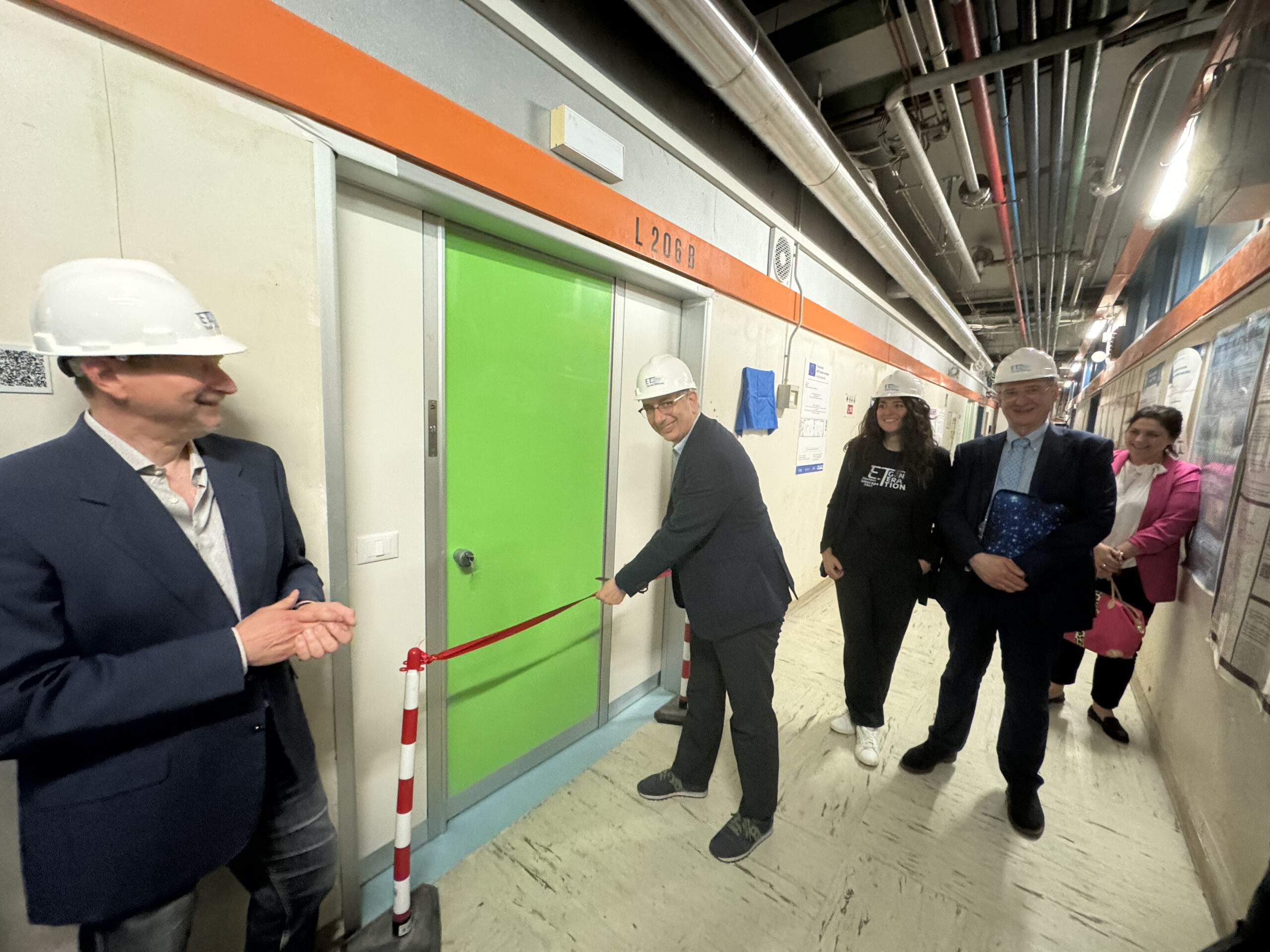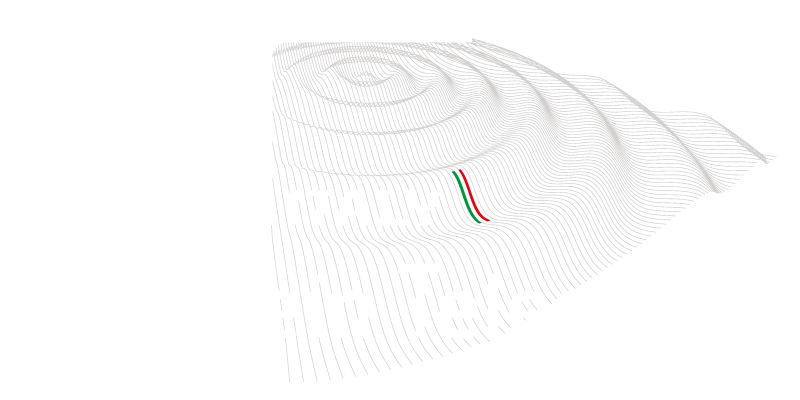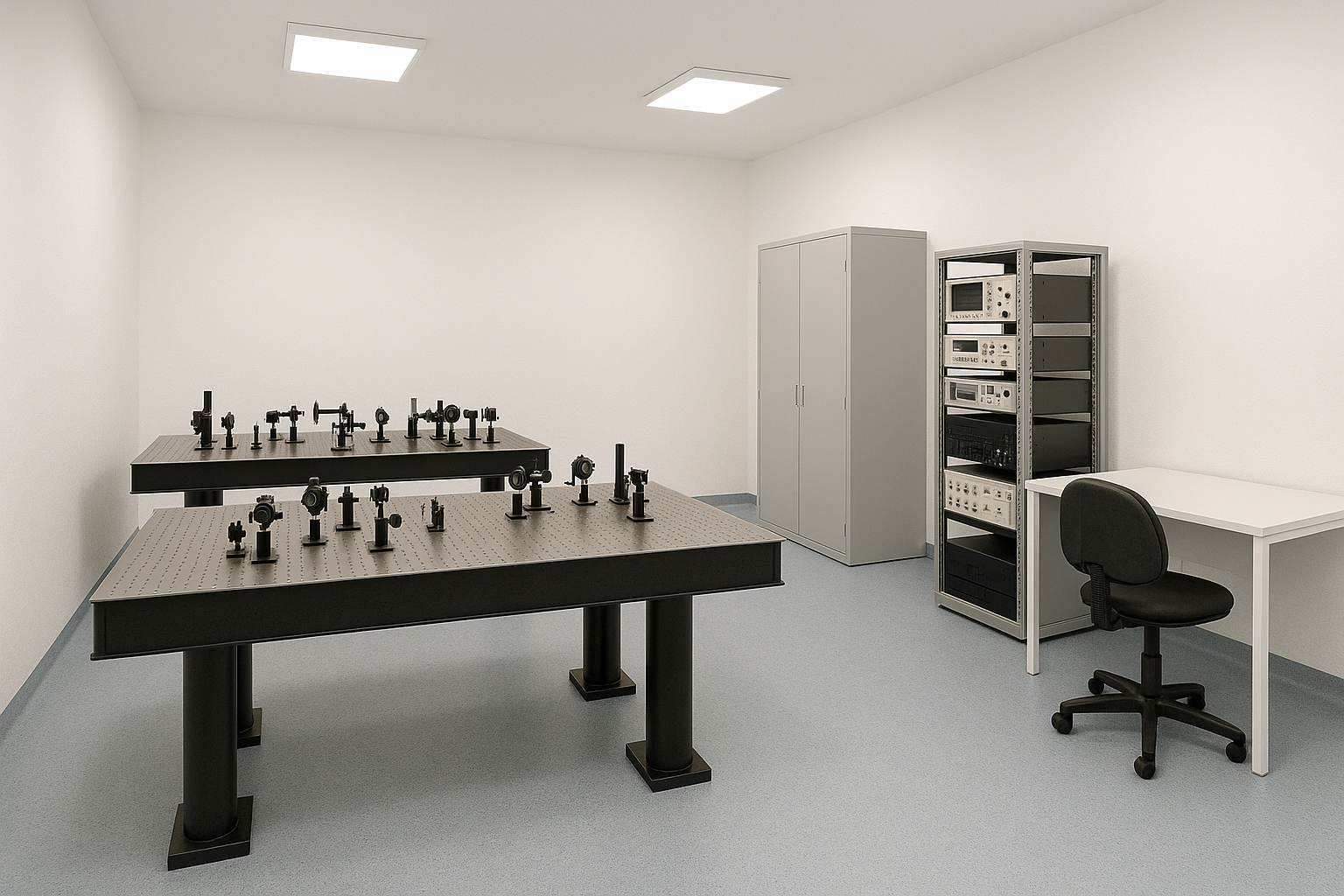On Friday, June 6, the GALILEO laboratory was inaugurated in Genoa, at the Department of Physics of the University. The lab is dedicated to the study of quantum optics applied to the detection of gravitational waves, particularly for the future Einstein Telescope (ET) observatory.
The creation of the laboratory is part of the objectives of the ETIC project, funded by the Italian Ministry of University and Research (MUR) under Mission 4 of the National Recovery and Resilience Plan (NRRP), with the National Institute for Nuclear Physics (INFN) as the lead institution. ETIC supports Italy’s candidacy to host the ET in Sardinia, at the former Sos Enattos mine site in the Nuoro area, through the characterization of the proposed site and the establishment of a network of cutting-edge research laboratories throughout Italy.
The inauguration event opened with institutional greetings from Marco Pallavicini, Vice President of INFN, Mauro Gino Taiuti, Director of the INFN Genoa section, Riccardo Ferrando, Director of the Department of Physics at the University of Genoa, and Laura Gaggero, Vice Rector for Research at the University of Genoa. Following this, Michele Punturo, the head of the international ET collaboration, presented the ETIC project (of which he is coordinator), while Andrea Chincarini, head of GALILEO, and Barbara Garaventa, head of ET Genoa, outlined the scientific and technological challenges of the new laboratory. Finally, before the traditional ribbon-cutting ceremony, Riccardo Damasco and Claudio Camilli (PHA.SE Srl), along with architect Mario Frusca, discussed some of the infrastructural and engineering aspects of GALILEO.
«Our university has hosted the Genoa section of the INFN for many years, historically one of the Institute’s most prestigious. This close relationship has led to a fruitful scientific collaboration that constantly contributes to our mutual professional growth», says Federico Delfino, Rector of the University of Genoa. «The GALILEO laboratory represents a new milestone in the growth of the Genoa INFN section, and I would like to congratulate the colleagues who work there with dedication and whom I hold in high regard for their outstanding scientific profile.”
«The GALILEO laboratory, inaugurated today thanks to the long-standing and successful collaboration between the University of Genoa and the INFN, will operate in two key areas, quantum optics and magnetic noise reduction, with the goal of developing cutting-edge technologies for the Einstein Telescope», emphasizes Marco Pallavicini, Vice President of INFN. «This is an important mission that confirms the leading role played in this field of research by the Department of Physics at the University and by the Genoa Section of the INFN, which is already deeply involved in the ongoing Virgo experiment».
Compared to the currently operational gravitational wave detectors (LIGO in the United States, Virgo in Italy, and KAGRA in Japan), the sensitivity of the Einstein Telescope will be at least ten times higher, which translates into access to a volume of the sky a thousand times larger. To achieve this goal, ET will require cutting-edge technologies capable of eliminating or mitigating various noise sources, such as quantum or magnetic noise, that could interfere with the experiment’s measurements.

The traditional ribbon-cutting ceremony of the GALILEO laboratory
«Quantum noise is one of the main sources of noise in current and third-generation gravitational wave interferometers. It spans the entire observation frequency band and is caused by vacuum fluctuations in the laser light used in the interferometers», explains Barbara Garaventa. «To mitigate this effect, ET will need to adopt a quantum technique called “squeezing”, already used in current instruments, which reduces quantum uncertainty in one of the two parameters, position or momentum of the light. Magnetic noise, on the other hand, is related to sensitivity to magnetic fields and their fluctuations. It dominates at low frequencies, specifically between a few hertz and 100 hertz, frequencies accessible to third-generation gravitational wave detectors like the Einstein Telescope. For ET, it will therefore be necessary to develop magnetic noise mitigation strategies near the interferometer’s sensitive components».
«Within the Einstein Telescope framework, the GALILEO laboratory aims to develop technologies useful for mitigating both quantum and magnetic noise», adds Andrea Chincarini. «More specifically, the project includes a dedicated quantum optics laboratory, with a cleanroom, for the development and testing of optical cavities and optical devices useful for ET, complementing squeezing generation experiments, and a new facility for characterizing and measuring the magnetic emission of devices, aimed at mitigating magnetic noise».

